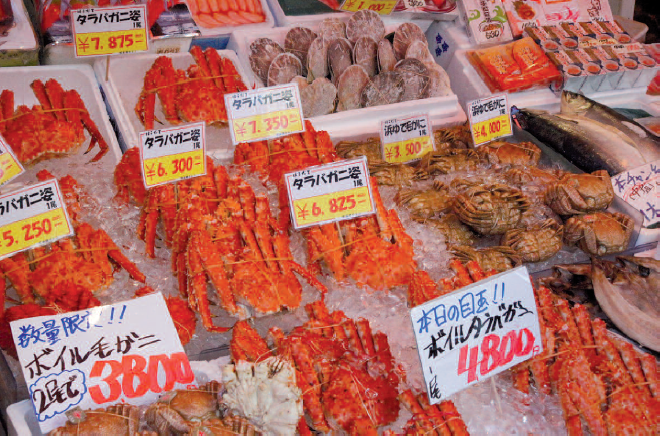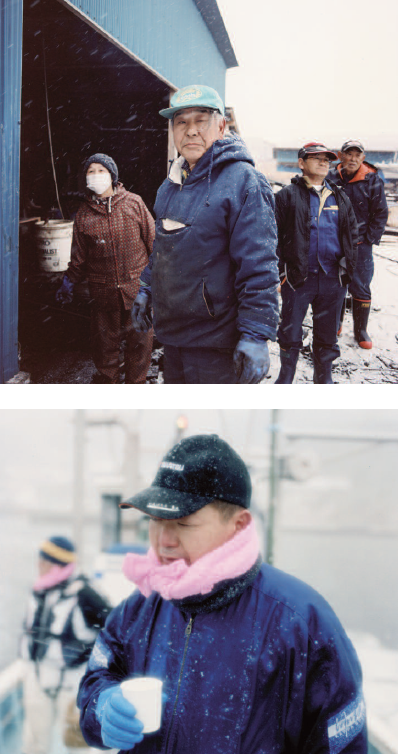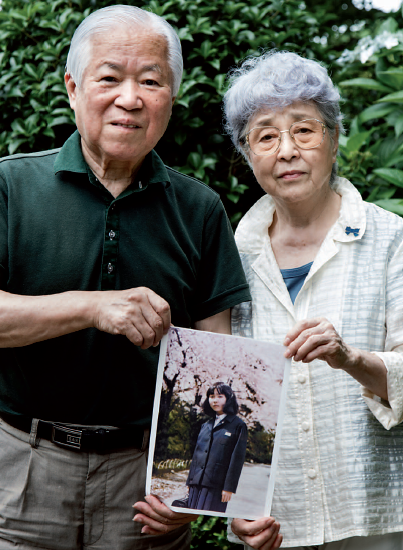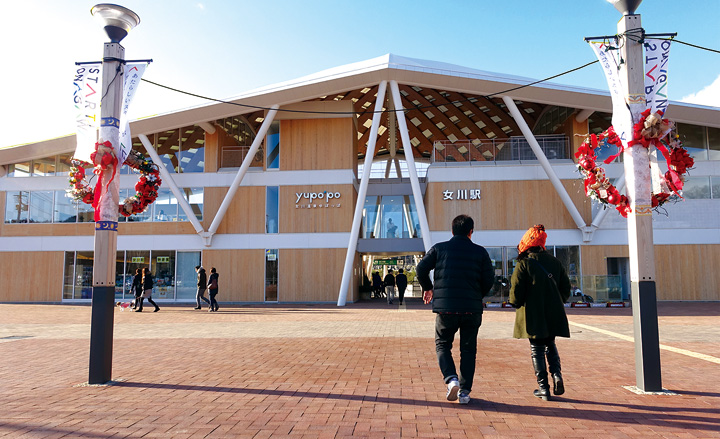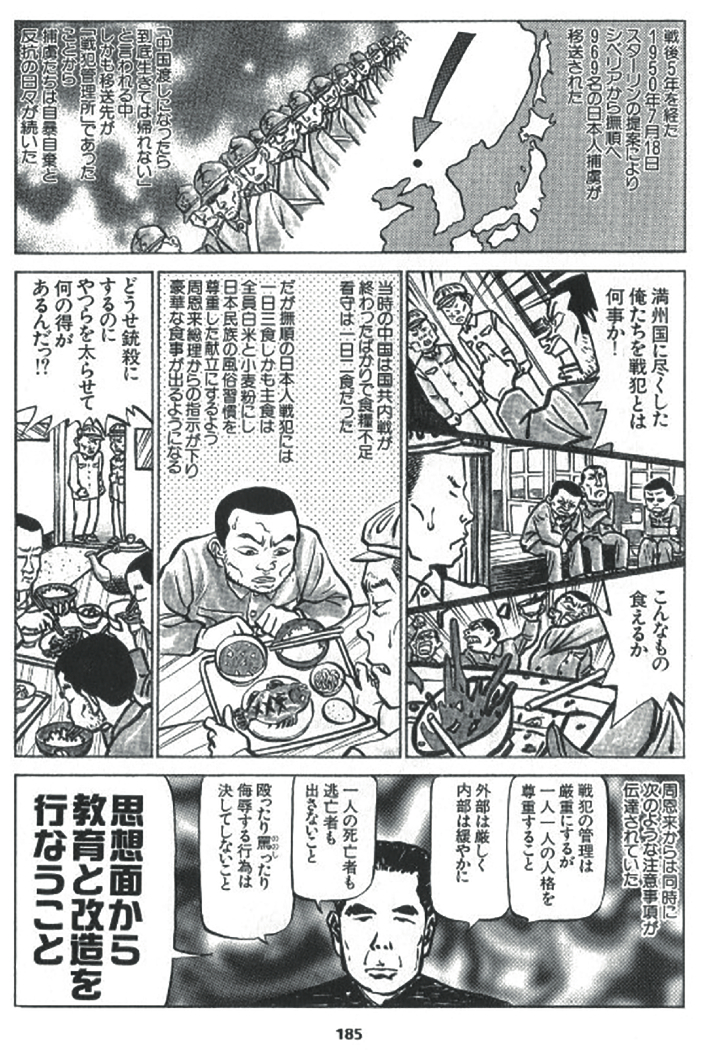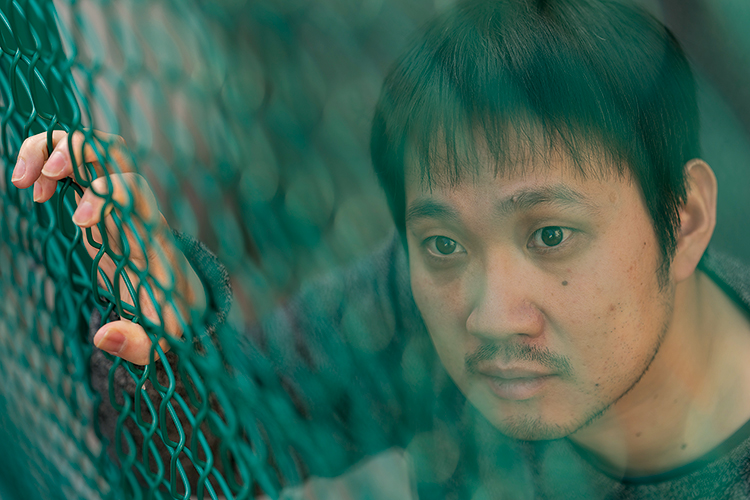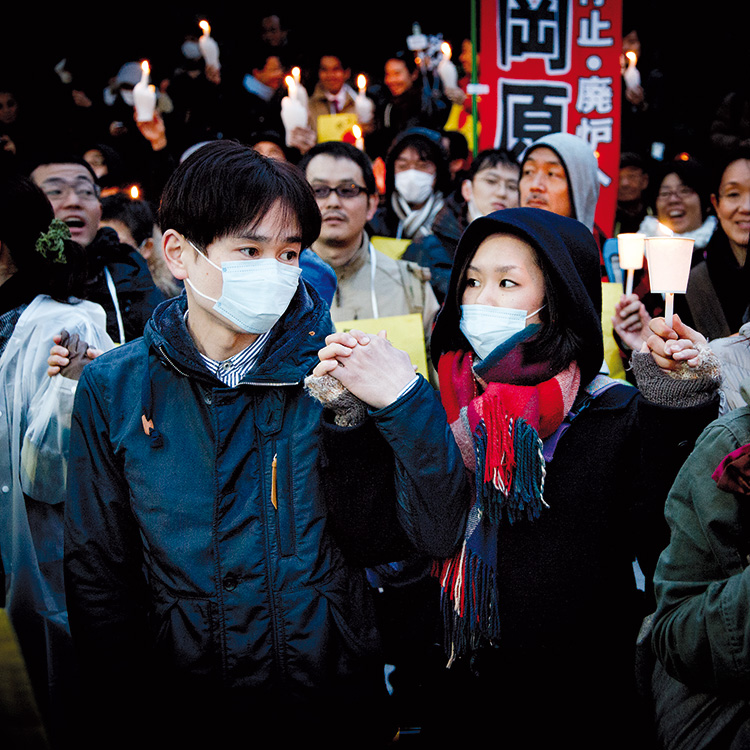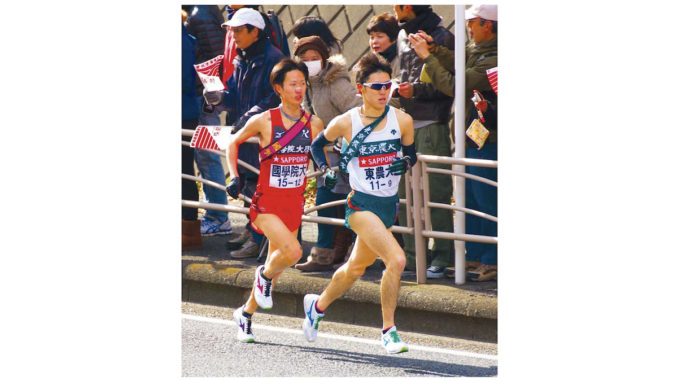

The first big sporting event of the year, the team relay marathon between Tokyo and Hakone is hugely popular.
During the New Year’s festivities, a lot of people follow the same routine every year. When I used to live in Italy, for instance, my family would get up late on New Year’s Day and while away our time until, at 11.15, we would turn on the TV in time for the start of the Vienna New Year’s Day Concert. None of us watched the programme from beginning to end – especially my mother who was in the kitchen cooking lunch – but nobody dared to change the channel, and the Viennese waltzes would sound throughout the house, a sort of soundtrack announcing the new year.
Since I moved to Japan, the Vienna concert has lost much of its appeal, mostly because the time difference between Tokyo and Europe means that here it is broadcast in the evening, which defeats the whole purpose of watching the concert in the first place. On the other hand, every year, usually on 2 January, I’m held hostage at my in-laws’ where I have to put up with the Tokyo-Hakone Round-Trip University Ekiden Race, a team relay marathon. The difference is that while the concert only lasts for a little more than an hour, the Hakone Ekiden goes on and on for more than five hours.
While I’m not really a fan of watching a bunch of young boys running in freezing temperatures, I am clearly in a minority, at least among people my age or older, as the Hakone Ekiden is one of the most popular and prestigious sports events in the country. Every year, millions of Japanese tune in on Nippon TV at 8.00 a.m. and sit around until the early afternoon while nibbling at osechi (New Year food) leftovers, seemingly mesmerized by the running drama slowly unfolding in front of their eyes.
An ekiden is a long-distance relay race pitting teams of runners against each other. Each member covers one section before passing a sash (called tasuki in Japanese) to his teammate. The gruelling two-day Hakone Ekiden held on 2 and 3 January, is not the only such race in Japan. Ekiden are held year-round (the peak season is between November and March), and some of them are even longer. In fact, at 217.1 km, the Hakone Ekiden is only the fourth longest relay race currently being held (the two longest ones, in Yamagata and Saga prefectures, are both around 300 km long). It’s also a very locally based race as it’s only open to universities located in the Kanto region. However, it’s by far the most popular and prestigious.
First off, being held in Tokyo gives it a certain glamour. Another reason for its popularity is that, since 1987, it has been broadcast nationally during the holidays when most people spend their time relaxing at home. It’s also by far the oldest event. After the success of the very first ekiden – a monster 500-km-long three-day competition run in 1917 from Kyoto to Tokyo to commemorate the 50th anniversary of Tokyo becoming the capital of Japan – Kanakuri Shiso, known as the “father of the Japanese marathon”, proposed a new race to develop stronger athletes who would perform well at the Olympic Games. Kanakuri’s grand dream was to hold an attention-grabbing American Transcontinental Ekiden – an epic journey from San Francisco to New York. His plan called for a qualifying event in Japan, and in order to prepare the runners to cross the formidable Rocky Mountains, he chose to include a steep section that climbed up to the city of Hakone.
While the American race never materialized, Kanakuri managed to raise the money for the Japanese competition and convinced four universities to participate, and the first took place on 14 February 1920.
While the Hakone Ekiden has become a fixture of the sporting calendar and an important social event, there was a time when its existence was in danger. Not only was it temporarily suspended during World War II (the only one took place in 1943) but there were times when the police forced changes in the race and even threatened its cancellation, particularly during the time of high economic growth between the mid-1950s and the late ‘60s when car ownership skyrocketed and traffic congestion became a recurring problem. Now, to the contrary, the race takes precedence over anything else, and even train schedules are temporarily altered to avoid having the athletes stopped by a closed railway crossing.
Like other sports events, the Hakone Ekiden’s early years were marked by uncertainty. According to some people, the real purpose of the event was to attract tourists to Hakone in winter when there are fewer tourists due to the cold and snow. Moreover, it was held over two days to increase the number of people staying overnight. Whatever the reason, there were times when the choice of location backfired spectacularly, for instance, during the very first to take place, when a member of Keio University (the captain of the mountaineering club) disappeared while running up the mountain in the snow with the temperature falling to minus 10 degrees Celsius. He was finally found crying while clinging to a tree.
For many years, the rules themselves were rather ambiguous. In the early days, for instance, the dates were not fixed like they are today. There were also times when the race would start late in the day. Since the main duty of a student was to study, and sports events had to be moved to fit in with the curriculum, the race sometimes started in the afternoon because classes were held in the morning. In such cases, the sun set in the middle of the race and the athletes running in the 5th section ended up covering the distance in the dark.
Especially before World War II to immediately after the end of the war, due to a shortage of students who were fit enough to run the ekiden, it was difficult to form a ten-member team, so athletes from sports other than track and field, and even rickshaw drivers, were recruited to run instead.
Things began to change for the better in the second half of the ‘50s. From 1956, the race was held on 2 and 3 January, and from 1958 its popularity was boosted when NHK began to broadcast it live. From the ‘60s to the ‘70s, universities with physical education departments emerged whose students were more interested in running than achieving good grades (e.g. Nippon Sports Science University, which won five straight times between 1969 and 1973).
Now as then, the Hakone Ekiden is divided into five sections (each one about 20 km long) that replicate part of the route of the old Tokaido. During the Edo period, couriers delivered documents and information by horse, and at each post station they could rest and change horses or pass the mail to another courier. Today’s runners do the same but instead of the mail, they pass a sash to their teammate.
The course starts on Route 1 at Otemachi, in central Tokyo, in front of the Yomiuri Shimbun Headquarters (Japan’s biggest daily has long been the race’s main sponsor). The outbound route, run on 2 January, is 107.5 km long and apart from its first section, takes place in Kanagawa Prefecture. The return race (3 January) repeats the same route in reverse and is 109.6 km long.
The race starts at 8.00 a.m., after the cheering squads from the participating universities have shown off their skills while parading their banners. The first section is where many sprinters are deployed, but they often end up keeping each other in check to avoid an early surprise dash to take the lead.
The second section is the longest one and crosses Yokohama. It’s considered one of the trickiest and most interesting because of its topography. It’s important to carefully pace oneself and not expend too much energy in the first half, otherwise there’s a risk of stalling in the uphill second half, so this section is often entrusted to top athletes including international students (mainly from African countries).
In the third section, the race reaches the Shonan coast. This is a flat and seemingly easy stretch, but it’s easily affected by strong winds from the sea. On clear days, the athletes can enjoy a majestic view of Mt. Fuji.
The last part of the outbound course is the dreaded uphill section with a rise in altitude of 864 m. Considerable leg strength, stamina and a particular mindset are required to tackle the climb successfully. For this reason, a special kind of runner is chosen. Though its length has been shortened, this is where many races are decided because top runners have an opportunity to open huge gaps and increase their team’s lead by several minutes. On the other hand, teams that have struggled in the first four sections can make up for lost time and even achieve comeback victories. This section is so important that the best runners are nicknamed “mountain gods”.
Interestingly enough, while all commentators and fans talk about the climb, the last 4km are actually downhill, and the sudden change in the load on the muscles combined with the cold weather is such that some athletes find it hard to cover the distance. That’s why many athletes running in the 5th and 6th sections wear long sleeves and arm and leg warmers.
The return leg of the ekiden starts with a descent whose average speeds of 25km/h and tight curves put a lot of strain on the knees, so much so that the last 3km of the 6th section, which are almost flat, feel like going uphill. Weather-wise, this might be the toughest section in the whole race because, like the day before, it starts at 8.00 a.m. when temperatures are very low and, depending on the weather conditions of the previous night, the road surface may be icy and slippery.
The next interesting sections are the 8th and the 9th. Here, dehydration can cause sudden crises, and if a runner rapidly loses speed, he can ruin his team’s chances to win the race. Indeed, many lead changes occur during these 40 kilometres.
By the time the athletes reach the final stretch, all the roads are packed with fans. This section features the Terada Intersection, so called because in 2011, Terada Natsuo of Kokugakuin University, battling to achieve the important tenth place which would secure his team a seeded place the next season, made a wrong turn while following the TV relay car.
The Hakone Ekiden is organized by the Kanto Gakuren (Kanto Student Athletics Federation) and co-sponsored by the Yomiuri Shimbun. Every year, 21 teams take part in the race: ten seeded teams (those who finished 1st to 10th the year before), ten universities that passed the qualifying round (held more than two months before the competition), and, from 2003, the Kanto Student Union Team which is made up of athletes from other universities that did not qualify.
Team entries are limited to 16 members, ten regular runners and six substitutes. Up to four members can be substituted on each day. Most changes occur on the return route, when teams try desperate moves to improve their position. In recent years, some athletes who were in particularly good condition and should have been listed among the ten regular starters were instead registered as substitutes just for this purpose.
The Hakone Ekiden’s increasing popularity has put a lot of pressure on the universities to do well. This has led to some teams including international students in their ranks. In the early days before the Pacific War, only a few Korean athletes ran the ekiden. However, in the late 1980s, Yamanashi Gakuin University started a trend by adding African exchange students to its team. Their overwhelming speed created a sensation and allowed the university to win three times between 1992 and 1995. The emergence of international students has had a major impact on the speeding up of the race and has caused some people to criticize their inclusion as unfair and un-Japanese. In response to those critics, since 2006, no more than two foreigners can be entered by each team and only one of them can compete. This said, history has shown that using international students does not necessarily lead to good results. In fact, Yamanashi Gakuin University is the only foreign-aided university that has actually won the overall championship so far.
Many people outside the Kanto region resent the race’s nationwide popularity. After all, they say, this is just a local competition that does not deserve to be put on the same level as national races such as the Izumo Ekiden (Shimane Prefecture) and the All Japan University Ekiden. However, in recent years, the universities in the Kanto region have displayed a strong tendency to make the Hakone Ekiden their principal goal of the year.
To be sure, this is a long race and it features special mountain sections that are not found in other events, making this the toughest among the student ekiden. So, they reason, this must be the most prestigious competition. It follows that the Izumo Ekiden and All Japan University Ekiden are often seen as just a prelude to the Hakone Ekiden or a training session and not the other way around. In fact, quite a few universities do not send their best members to those national competitions.
This situation has led to calls to include universities outside the Kanto area. However, Kanto Gakuren is wary of such changes because it does not want to lose its controlling power over the race.
Though the Hakone Ekiden has enjoyed extraordinary success and is considered by many athletes the pinnacle of their sporting activities, it must be noted that not many of them have gone on to have outstanding running careers. In fact, they’ve only won one bronze medal and achieved seven top-ten finishes at the Olympics, while at the World Athletics Championships, they’ve won one gold and two bronze medals, with eight top-ten finishes.
Moreover, commentators also talk about a kind of Hakone Ekiden burnout syndrome as many athletes who performed well in this race and joined a corporate team after graduating from university have been unable to perform as well as expected, were plagued by injuries and illnesses, and were often forced to retire early.
In the end, though, it doesn’t really matter because while the original purpose of establishing such an event was to “develop world-class long-distance runners”, many athletes consider the Hakone Ekiden as their ultimate goal.
Gianni Simone
To learn more on the subject, check out our other articles :
No.134 [TRAVEL] Tokyo, the cradle of modern sports in Japan
No.134 [ENCOUNTER] Promoting social cohesion
No.134 [FOCUS] Sport is a serious business!
No.134 [TRADITION] Gymnastics for everyone
Follow us !

